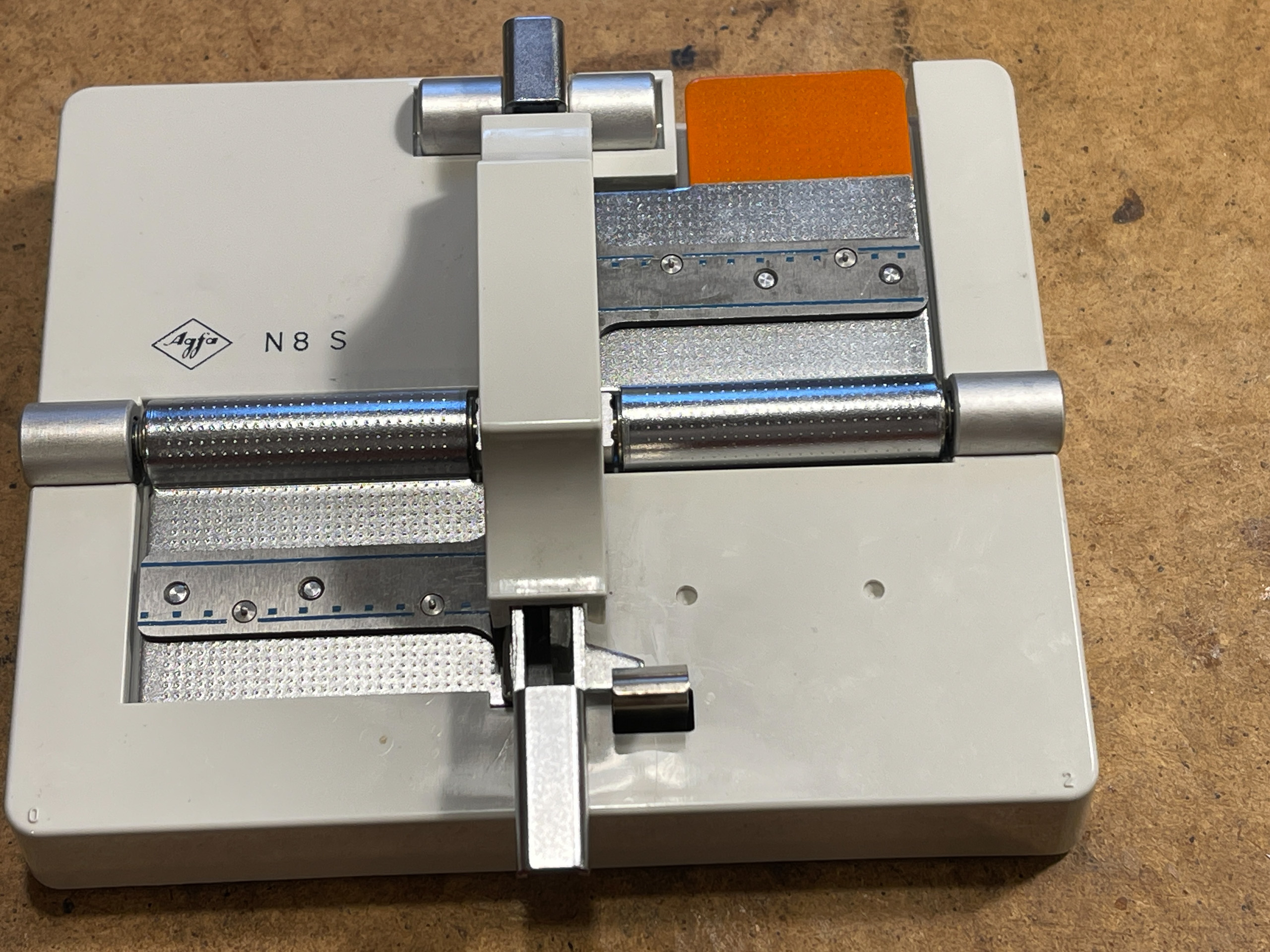
The Agfa Splicer N8S is actually a very excellent glue press for long-lasting “wet” splicing of Super 8 films. It grinds both ends of the film to be glued in a wedge shape and works very precisely so that extremely durable splices are created, running very quietly through the projector. Films with a magnetic soundtrack can also be spliced very well. It is also inexpensive.
The only disadvantage: There is probably no single working model still around.
The reason for the chronic defect are two rubber stamps that are supposed to hold the film in position during the grinding process. Today, this rubber is not only as hard as steel, it also breaks down to dust even with the slightest touch, so that the film is no longer held in place during the grinding process. Over the years, I have received about half a dozen of these splicers, and the rubber has always been completely or partially missing. Spare Parts? Haven’t existed for 40 years. The repair is very easy, costs less than $ 2 and less than 10 minutes.
The rubber stamp can be easily recreated: With Sugru. This “modable glue” is available from Amazon, for example, or directly from sugru.com. The color does not matter, I only advise against the “family-friendly formula”. That one takes several days to dry and, in my opinion, is less stable.
First we clean the splicer, especially the splicing area should be free of film dust, dirt and glue residues, so that we don’t work them into our stamp. Acetone on a cotton swab is well suited for cleaning.
To repair, we first push the slider of the grinding device to a central position. Then we cut some Sugru out of the freshly opened bag, knead it briefly until soft and press a ~1″ long sausage to the place where once the rubber was located. With our fingers, we make sure that the metal “feet” that once carried the rubber are about in the middle of our Sugru sausage. The Sugru can be well smoothed out with a moistened finger. It is important to ensure that ideally no Sugru gets onto the corrugated grinding knife, otherwise it may have to be removed from there after it has dried. If you like, you can protect the grinding tools on the side with a “wall” made of scotch tape, which can then be removed from the dried Sugru without leaving any residue.
Once the Sugru is attached to the lever, we moisten the opposite side of the glue press with a little washing-up liquid so that the Sugru does not stick here. Now we close the splicer briefly and open it again immediately. Without touching the newly formed stamp, we now leave the splicer open for 24 hours, that’s how long it takes the Sugru to harden.
Once the 24 hours have passed, you can simply cut ugly overhangs cleanly with a cutter. It looks best (and most original) when you can no longer see Sugru when viewed from above. The grinding tools may also have to be cut free again.
Complete!












Related Posts